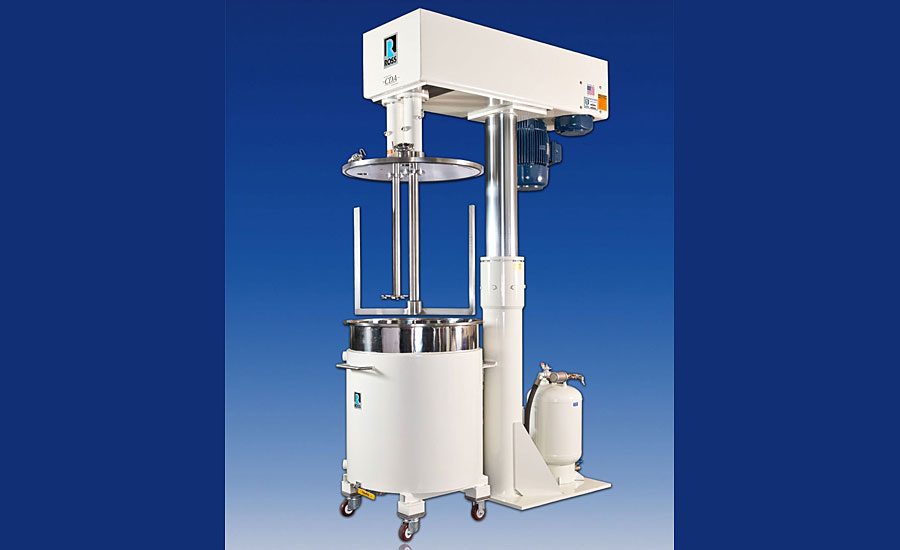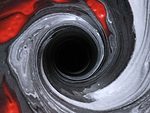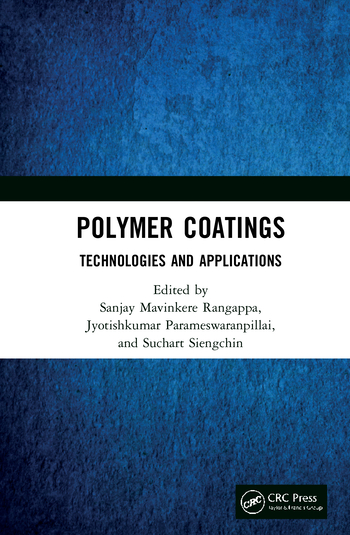When Formulations Change, Mixing Technologies Respond




Choosing the appropriate mixing technology for a specific application is key when considering manufacturing processes in coatings production. Because end products and raw materials vary, there is a range of mixing and dispersing technologies employed in the coatings industry. Additionally, suppliers of coatings raw materials are creating new products that can change mixing processes in manufacturing. For instance, an additive supplier develops a product that can undergo wetting and dispersion in a single dissolver step instead of a dissolver and a milling step, possibly prompting a change in mixing operations.
In the introduction to the 2004 edition of the “Handbook of Industrial Mixing,” a reference book for the industrial mixing industry, the authors point out that there is significant cost when mixing issues are not evaluated during the development of industrial processes. The handbook reported “yield losses of 5% due to poor mixing are typical” in the chemical industry. When an industry implements advancements in technology, the mixing technology that supports those advancements must also be considered.
The decades since World War II have seen a number of changes in coatings formulations. Environmental and health concerns have promoted advancements in coatings in several directions as developers worked to lower the VOC content of their products. Powder and UV-cure coatings, high-solids coatings, and shifts from solventborne formulations to waterborne are the result of these efforts. Another major influence in the formulation of coatings is the advancement of new technology, such as nanotechnogy and its use in coatings formulations. These changes present challenges to manufacturers as they deal with mixing issues presented by this new technology, including the differences in viscosity and viscosity peaks between waterborne, solventborne and high-solids formulations; the introduction of additional additives and their impact on the manufacturing process; and the challenges presented when formulators incorporate nano-sized particles into new coatings.
Multi-shaft and planetary mixers provide good solutions for mixing high-viscosity coatings and coatings that experience viscosity peaks during mixing. While mixing technologies employed in high-viscosity coatings production differ depending on formulation, viscosity profile and shear input are important factors that coatings formulators should consider.
Multi-shaft mixers have two or more independently driven agitators that work together. The agitators can perform with different combinations and speeds at different times during the mixing cycle. With this design, manufacturers can expect high-shear agitation and laminar bulk flow for non-Newtonian fluids.
Dual-shaft mixers have an economical design that features a low-speed anchor and a high-speed saw-tooth disperser blade. In an example provided by Charles Ross & Son Co., a typical mixing procedure with a dual-shaft mixer “starts with blending of the solvents and binders, followed by stepwise addition of solids and minor liquid components, i.e. pigments, extenders, wetting and dispersing agents, rheology modifiers, defoamers, moisture scavengers, other additives and catalysts.” During the mixing process, temperature is controlled by scrapers that are attached to the anchor agitator, optimizing heat transfer across the sides and bottom of the mixing container.
Planetary dispersers and double planetary mixers are a good choice for coatings that experience high viscosity peaks during mixing. These products are designed with two or more blades that rotate on their own axes as they revolve around the mixing container. This design results in effective and complete mixing, as the two blades pass through every point of the product, contacting the entire batch.
An example of this technology is a planetary disperser designed with slow-speed planetary agitation and an orbiting high-speed disperser. This technology works well for integrating solids into a thick liquid base. Because each agitator is controlled independently, the flow and shear rates can be changed as the rheology of the mixed product changes. Another design that allows for fluctuation in rheology during the mixing process is a double planetary mixer. This mixer can be used for coatings formulations that start out with melting of a semi-solid or highly viscous paste. The design, which features identical planetary stirrers, can increase the level of shear as a product increases in viscosity.
When coatings formulators face the challenges of incorporating nano-sized particles into a liquid, both batch and in-line ultra-high-shear rotor/stator mixers offer useful solutions. Nanoparticles can present unique challenges when incorporating them into liquids because of strong attractive interparticle forces. Providing an alternative to high-pressure homogenizers, ultra-high-shear mixers deliver greater throughput without compromising mixing intensity. They also offer volume flexibility and easy maintenance.
In a batch mixer with a rotor/stator assembly, a rotor turns at high speed within a stationary stator. In the Ross PreMax, product is drawn from above and below the mixing head and then expelled at high velocity through stator slots.
In-line rotor/stator mixers can offer greater flow rates than colloid mill or high-pressure homogenizers and can be more effective at particle size reduction. Designs of mixing heads for in-line rotor/stator mixers provide differing results depending on the needs of the formulation, including shear levels, pumping rates, powder wet-out and product temperature.
As coatings formulators respond to the demands of consumers and the opportunities provided by new technology, the mixing industry is doing its part to support any emerging innovations.
Looking for a reprint of this article?
From high-res PDFs to custom plaques, order your copy today!








